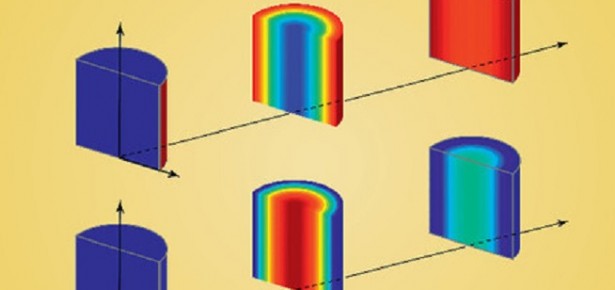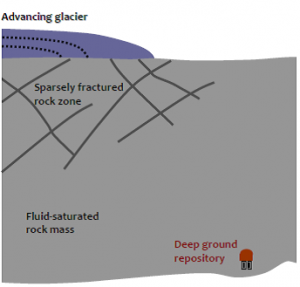
Trained as both a civil engineer and an applied mathematician, Professor Selvadurai is an internationally recognized authority in the area of Environmental Geomechanics, which deals with the application of mathematics and mechanics to problems in the environmental geosciences. He has received several prestigious research awards including the Max Planck Research Prize in the Engineering Sciences, the Humboldt Senior Scientist Award, the Killam Research Fellowship, the Killam Prize in Engineering and most recently the Biot Medal of the ASCE.
Environmental Geomechanics is an increasingly important area of research that has implications to topics such as the development of safe concepts for the deep geologic disposal of heat emitting nuclear fuel waste, geothermal energy extraction, energy resources exploration, extraction and transportation, and the geologic sequestration of greenhouse gases in fluidized form.
The two previous volumes with CUP resulted from courses taught at Universities and sabbatical leave collaborations with Professor Rob Davis of the University of Canterbury, Christchurch, New Zealand, where Dr. Selvadurai was an Erskine Fellow. The present volume, co-authored with research associate Dr. Alexander Suvorov, is a result of his long-standing interest in the development of safe concepts for the deep geologic disposal of heat-emitting radioactive wastes. The problem of nuclear waste disposal is bound to become a crisis issue as the reactors age and reach the end of their useful life. The long-lived hazardous waste needs to be dealt with using technologies that pose less of a hazard than keeping the waste in cooling storage pools at the reactor sites themselves. Several countries, including, Belgium, Canada, China, Finland, France, Germany, Japan, Russia, Spain, Sweden, Switzerland, UK and USA are actively involved in many of the research aspects related to deep geologic disposal. The challenge in developing such proposals is to ensure that the proposed methodologies will be sustainable for unprecedented time scales, in the range of 10,000 years, which is beyond the time-scales of the human involvement in the engineering endeavours themselves. One of the key aspects of research in this area is the development of mathematical models that can provide a glimpse into the feasibility of the various deep geological disposal concepts. As Dr. Selvadurai remarks, “Forgetting about the problem will not make it disappear. If a cradle-to-grave concept can be developed for the safe utilization of nuclear energy, this is bound to relieve our dependency on fossil fuels and contribute to the reduction in greenhouse gases.”
In the context of modern environmental geosciences, investigations of multi-physical processes in geomaterials have gained increasing attention and are now regarded as a requirement for presenting an all-encompassing approach towards developing solutions to geo-environmental problems. The discipline of computational geomechanics and geosciences is rife with computer software that is used by both experienced researchers and students without a complete command of the background developments and methodologies used in the codes. This volume provides a comprehensive exposition of the classical theory of thermo-poroelasticity, or the mathematical modelling of fluid saturated geologic media, complemented by complete examples to problems in thermo-poromechanics that are used to validate computational results derived from the multi-physics codes used in practice. A strong focus is placed on mathematical approaches that can be used to benchmark the accuracy of the computational approaches, which will ultimately be used solve real life problems. The extensive coverage of both theory and applications in thermo-poroelasticity and geomechanics provides a unified presentation of the topics, making this an accessible and invaluable resource for researchers, students or practitioners in the field.
Professor James R. Rice, Mallinckrodt Professor of Engineering Sciences and Geophysics at Harvard University offers the following evaluation of the new volume:

Loading of a sparsely fractured fluid-saturated geological formation containing a deep geologic repository by an advancing glacier
“Selvadurai and Suvorov provide a thorough and rigorous introduction to the foundations of thermo-poro-mechanics of fluid-infiltrated elastic media, focused on geophysical and geotechnical applications. Fundamental analytical solutions are derived for simple geometries (slits, cylinders, spheres) and compared to results of popular computational methodologies, with results serving as basis for application to key current areas of geoscience and geotechnology.”
As Professor Selvadurai remarks, “Don’t expect to complete the writing of a Research Volume during a sabbatical leave; this should be reserved for finalizing the volume. In all volumes that I have completed for Cambridge University Press, I have had the good fortune to collaborate with excellent co-authors that I have learnt from and vice versa. Having a capable group of post-doctoral fellows and research students has enabled me to embark not only on mathematical aspects of geomechanics and the geosciences but also the computational and experimental aspects that are a necessary counterpoint to the mathematical approach. How this volume will be received will be interesting to follow. Scientists and engineers have to be reconciled with the fact that public kudos are not in the vocabulary for volumes of this nature; appreciation of the work by students and other researchers is the ultimate reward.”
Latest Comments
Have your say!